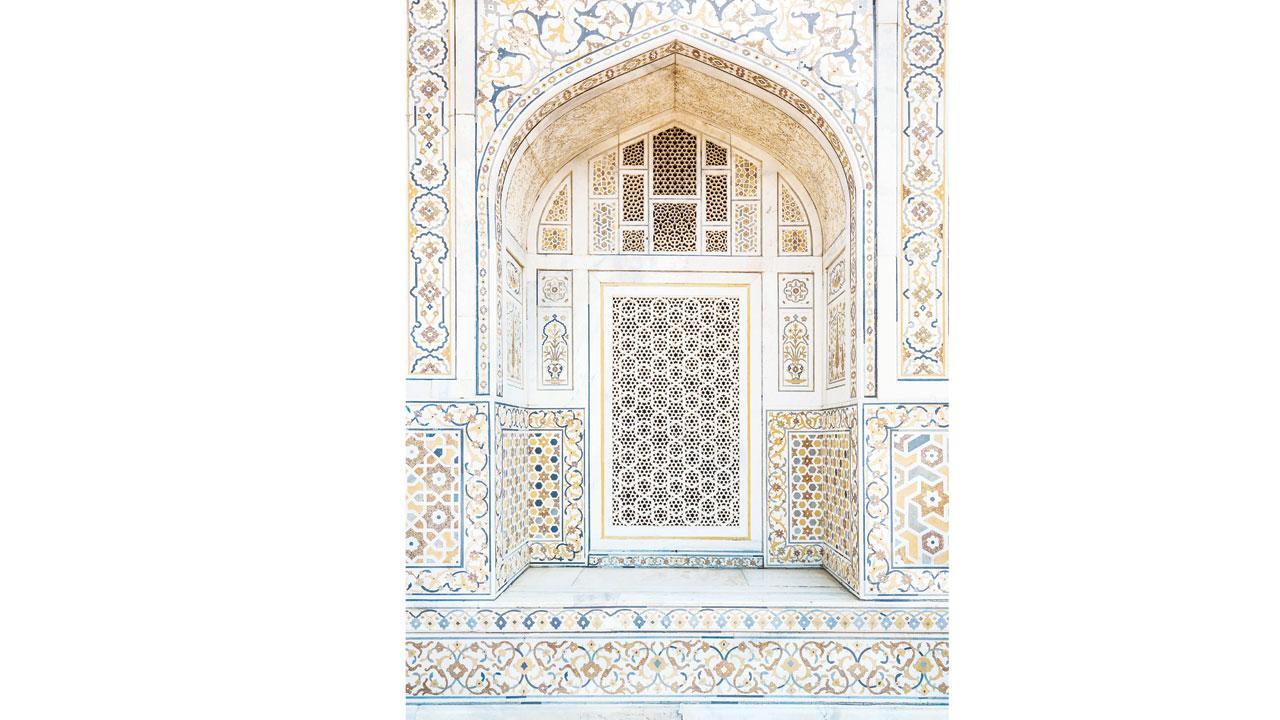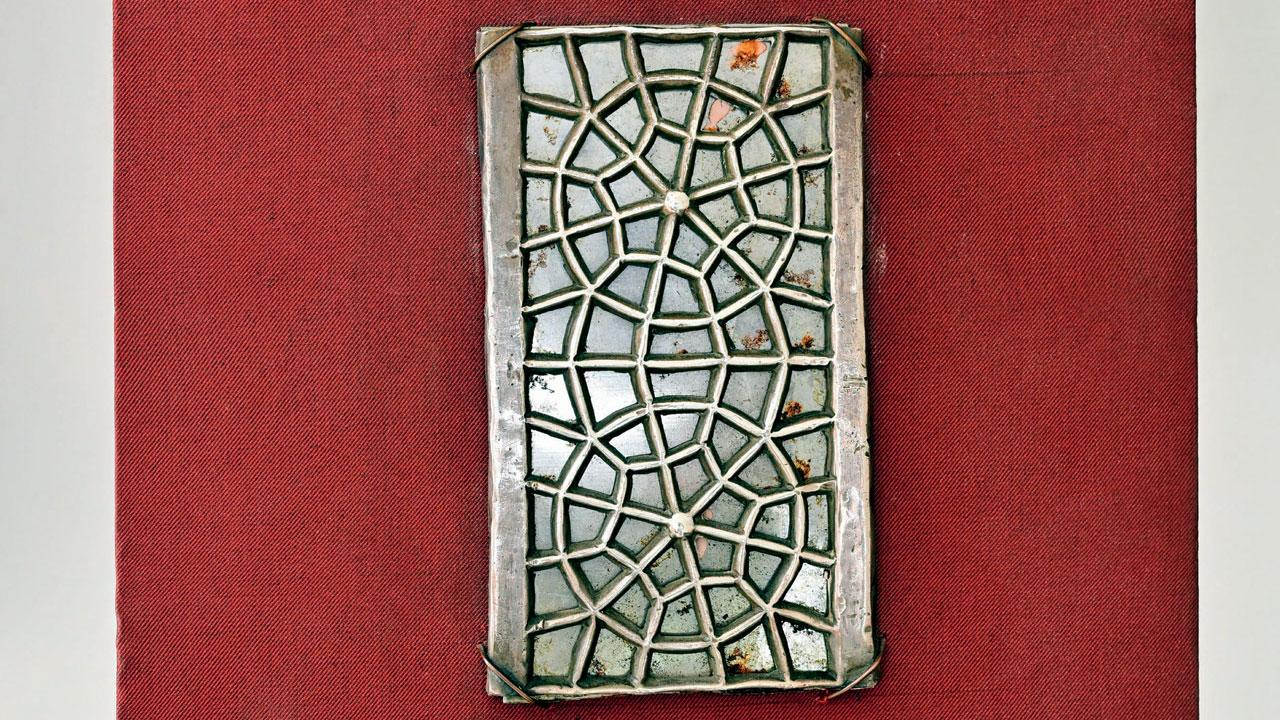In a first-of-its-kind outreach initiative, a faction of Dawoodi Bohra community opens its crystal doors to the world, inviting people of all creeds to visit this mausoleum built in Thane to honour their spiritual leader

The pristine white mausoleum, juxtaposed against the verdant Yeoor hills, features Makrana marble on the outside and Italian marble on the inside. The entire Quran is engraved in gold on the marble tiles inside. Pics/Shadab Khan
The Dawoodi Bohra community, so often shrouded in secrecy, is slowly opening its doors to the world, quite literally. In an effort to promote inter-cultural dialogue and foster communal harmony, the community is now inviting people of all creeds and cultures to visit Raudat-un-Noor (Garden of Light), a mausoleum built in 2022 in honour of Khuzaima Qutbuddin, community leader of one faction of Dawoodi Bohras, in Thane West. Every Sunday, at 5 pm, visitors can embark on a guided tour—in Hindi, English, Marathi or Gujarati—and catch a glimpse of the beautiful architecture and craftsmanship on display at the mausoleum, or Mazar-e-Qutbi, as well as learn about its historical and spiritual background.
ADVERTISEMENT

Shabbir Bhaigora, executive director of the guided tour at Raudat-un-Noor, begins the visit with a brief history of the community
The mausoleum, or Mazar-e-Qutbi, makes for a striking sight, with its pristine white marble exteriors nestled amid the lush green of the Yeoor hills. It’s easy to find; Google Maps brings us right to the main gate located right on Pokharan Road. We get there on a horridly humid August afternoon, but as we step into the mazar complex, the temperature drops by a few degrees. Two large date palm trees tower over the courtyard near the entrance, casting a benevolent shade over the compound. We’re told these “khajooris” were sown by the 52nd Syedna (spiritual head of the community) Mohammad Burhanuddin and his half-brother, Qutbuddin. When the latter had passed on from the world, the community decided to lay him to rest here, and built the mausoleum around these trees so they wouldn’t have to be axed. The entire complex is dotted with plants, and we spot quite a few butterflies enjoying the cool comfort in the complex with us.
Our host for the day is Shabbir Bhaigora,executive director of the public guided tour,who takes visitors through the complex every Sunday,showcasing the historical, cultural, and spiritual significance of Raudat-un-Noor. He begins the tour with a crash course on the history of the Dawoodi Bohra community, which dates back to the 11th century in India.

The community centre features a gorgeous 5,000-sq-ft handwoven carpet from Mirzapur, as well as a brilliant crystal chandelier crafted in Czechoslovakia
It was Qutbuddin’s son Taher Fakhruddin, who decided to throw the complex open for public viewing. “He has a vision of people living in interfaith harmony in India and across the world. That is why we have opened Raudat-un-Noor to anybody who would like to visit. Everybody is most welcome,” says Bhaigora. That focus on interfaith cultural exchange and support is also evident in the Zahra Hasaanat Centre, which is an in-house social welfare centre where the community hosts quite a few initiatives to support Thane residents across religious lines, whether it’s with free meals thrice a day—as many as 100-200 local factory workers queue up daily for breakfast, lunch and dinner every day—or with free tuition classes for children and literacy classes for women.
We move into the community centre, where they gather for sermons, prayers and rituals. The first thing that draws one’s attention here is the gorgeous 5,000-sq-ft, sky blue carpet—a single carpet hand-woven by artisans in Mirzapur, Uttar Pradesh. Not a second later, the eye shifts to the brilliant, glittering chandelier installed on the ceiling—imported from Czechoslovakia, we are told.

The mausoleum also features artefacts with religious and cultural significance, such as this barakati or portion from an old cenotaph of Maulana Abbas Alamdar in Karbala, Iraq
The lights and air-conditioning are all digitally controlled, and switch on automatically half an hour before the sermons and prayers are to begin, Bhaigora informs us.“We have solar power panels in the complex they power the entire place, including the air conditioning,” he says. Here, one can see architectural influences from Egypt, such as calligraphic engravings on the community centre’s central wall, inspired by the mehrab at Jame Al-Aqmar, built in Cairoin 1125. It features the sun in the centre, with rays extending outwards.The centre of the sun bears the names of Prophet Mohammad and his son-in-law Ali. During sermons, the pulpit is placed before this wall.
The room is encircled by a balcony where the women pray, overlooking the main area where the men pray. The balcony features the same blue handwoven carpet, along with a handsome wooden balustrade carved with geometric designs and skirted by a mural of teardrops “to signify mourning” during Muharram prayers, says Bhaigora.
We end our tour with the jewel that crowns the complex, quite literally. Qutbuddin's mausoleum itself is located on the terrace and is a structure in marble. The exterior was carved out of Makrana marble. The marble and artisans were brought to Thane from Makrana, Rajasthan, and they fashioned the crypt right here, Bhaigora says.
The crypt has “crystal doors” on all four sides, he says, explaining that each of the doors has exactly 999 bits of crystal embedded between glass panels. The doors reflect and refract the sunshine in a play in a mesmerising play of light and shadow. Inside, the Makrana marble gives way to the finest Italian marble. On this pristine canvas, artisans engraved the entire Quran in gold and rubies that glints gently in the glow emanating from another Czech chandelier. All beauty aside, the main focus here is the sepulchre, where we find people bowed in respect and prayer.
As we exit the soothing interiors of the mausoleum and head back into the heat of the day, we can’t help but think Raudat-un-Noor is a fitting homage to a leader who advocated for peace and harmony and inspired the community’s outreach to the world. A highly recommended window into the heritage and culture of the Dawoodi Bohra community.
Visitors’ guidelines
>> Wear full-length attire; sleeveless garments are prohibited
>> Carry a scarf to cover the head
>> Do not expose any tattoos
>> Photography is permitted, but no selfie sticks
When: Every Sunday, 5 pm
Where: Raudat-un-Noor, Pokharan Road, Thane West
To register: mazaar-e-qutbi.org
 Subscribe today by clicking the link and stay updated with the latest news!" Click here!
Subscribe today by clicking the link and stay updated with the latest news!" Click here!







